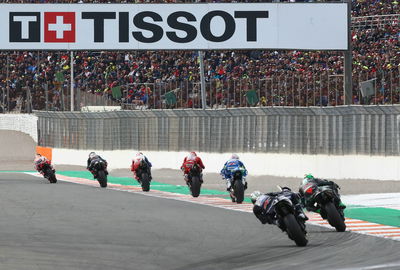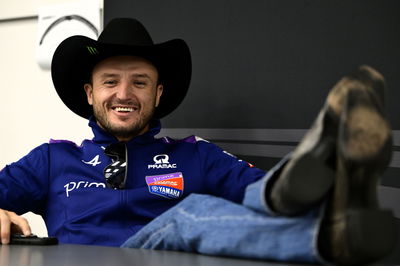MotoE: One year on from when it almost finished before even starting
A little over 12 months ago, MotoE’s existence looked in serious danger before it had truly begun when a massive fire during the Jerez pre-season test gutted all the bikes and equipment.
Despite a delayed start to its inaugural season due to the fiery destruction at the Jerez test on 14th March 2019, the first-ever MotoE race took place during the German MotoGP at Sachsenring under four months later to kick-off a four-round, six-race season which saw Matteo Ferrari crowned its debut champion.
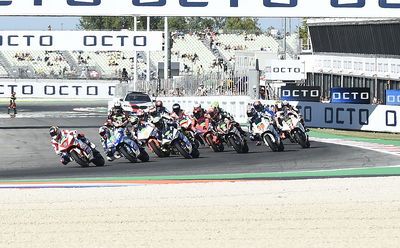
A little over 12 months ago, MotoE’s existence looked in serious danger before it had truly begun when a massive fire during the Jerez pre-season test gutted all the bikes and equipment.
Despite a delayed start to its inaugural season due to the fiery destruction at the Jerez test on 14th March 2019, the first-ever MotoE race took place during the German MotoGP at Sachsenring under four months later to kick-off a four-round, six-race season which saw Matteo Ferrari crowned its debut champion.
The jury is still out on the success of the first all-electric motorcycle racing series, and often faces opposition from fans and figures inside the MotoGP paddock, but the series remains set to stay a growing part of the Grand Prix world for the foreseeable future.
With the entire world moving towards electrification across almost all mobility and transport vehicles, MotoGP organises had to stick with the times to work with the FIM and Italian energy company Enel to launch MotoE.
Given the costs and complexity in manufacturing high-performance electric motorcycles, officials have made it a one-make and one-bike spec series using Energica Ego Corsa motorcycles made by Energica Motor Company. The bike is equipped with a 120kW electric motor powered by heavy high-voltage lithium-ion batteries contained in a tubular steel frame and cast aluminium swingarm.
While the power and speed statistics make for impressive reading – 0-60mph in three seconds, top speed of 168mph and 147.5lb-ft of torque – weight has proven to be the biggest problem with the heavy and large batteries dragging the bike down and compared to a conventional motorcycle. Weighing around 260kg, 60% more than a typical MotoGP bike, it rewrites the traditional geometry and handling of a two-wheel racer.
Like any all-new racing series, extensive testing would be essential for manufacturers supplying bike parts, teams and riders to figure out the new challenges put in front of them and, crucially, how to adapt and find the best performance to ultimately come out on top.
That all came to a dreadful halt when the nightmare paddock fire erupted just past midnight on the 14th March midway through the Jerez pre-season test.
Following an investigation by Energica, which confirmed all 18 bikes and the temporary paddock structure was destroyed, a short-circuit was blame for igniting the fire on the batteries and charger points of the MotoE bikes.
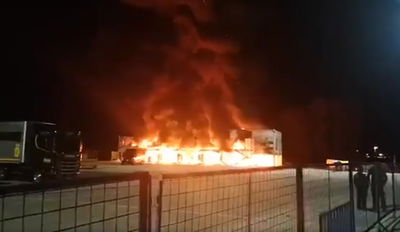
After suffering a total wipe-out, Energica had to construct a brand-new grid of MotoE bikes and charging points, along with new safety controls to ensure the same disaster wouldn’t strike twice. It forced a delay to the start of the inaugural season by two months to provide enough time to produce the new bikes and organise sufficient testing to prepare the teams to go racing.
Every race has been a learning experience for all involved in the 2019 season, with the first-ever MotoE race red-flagged after five laps when Lorenzo Savadori crashed at high speed and the weighty electric bike destroyed the air fence it smashed into at Sachsenring.
Accidents involving riders were equally as serious as inaugural series race-winner Niki Tuuli suffered left wrist and femur injuries in a practice crash at Misano.
Tuuli’s injury replacement Lucas Mahias, an ultra-experienced rider and former World Supersport champion, had to have a finger partially amputated following an off at the Valencia MotoE final round.
With heavy and volatile electric bikes, safety have been a major concern with the forces generated by a tumbling MotoE bike matching, and at times surpassing, a MotoGP equivalent as the electric bikes weigh around 60% more than the premier class equivalents.
It means certain circuits are unsafe for MotoE competition due to their layouts, while extra safety measures are put in place, from remote switch-off to special gloves for marshals to avoid them being electrocuted by a broken bike.
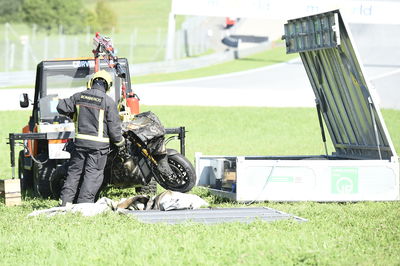
An additional safety concern unique to MotoE is the new danger of silent high-speed bikes. For 2020, warning sounds whenever a bike is moving in pit lane will alert everyone in the pits to be aware, when usually a loud engine ticking on the pit lane rev limiter completes that task.
Another potential hurdle is limited battery life, which has also be address by races lasting approximately 15 minutes, plus the one-lap Superpole qualifying format, to ensure bikes do not run out of electric juice and can still run at full throttle. In short, MotoE is the new fast and furious.
Given the equal-spec machinery, racing has naturally been close and competitive across the MotoE field, resulting in four different winners at each round in 2019, with Ferrari’s greatest consistency of two wins (both at Misano), a third place and three fifth places handing him the title ahead of ex-MotoGP star and initial favourite Bradley Smith.
With riders on the grid from a variety of backgrounds and experience, it demonstrated a range of previous racing knowledge carried over to MotoE, but all of the riders did have to learn a new way of riding.
“Whether it's electric or combustion, the way of racing is kind of similar,” said Smith, having become the first rider to take podiums in 125GP, Moto2, MotoGP and MotoE.
“The main difference is when you have to try to 'restart' 260kg.”
It means the extra weight of a MotoE bike makes it vital not to lose momentum.
“When someone passes you on the inside, you have to almost stay on the outside of them, because if you roll off too much and then accelerate again, you've lost so much speed because of the 260kg.”
Speaking after the first-ever MotoE race in Germany, Smith says the electric series provides genuine racing like any other class but requires riders to ‘figure out’ a new way to ride.
“You had to be smart, use the slipstream and attack in the right moments,” Smith said. “As you guys saw, Niki [Tuuli] tried to dive up the inside a few times, then ran wide and I could cut back. It’s racing out there and that’s what’s fun.
“At the end of the day we are a new era, but we're not here to take over. The start of this championship is just to add another string to the bow of MotoGP.
“If you look at the number of riders from different countries that are now in this paddock, all the different motorcycles and manufacturers that are here, mechanics from around the world and so on. I believe that Dorna has done a fantastic job implementing this championship into GPs.”
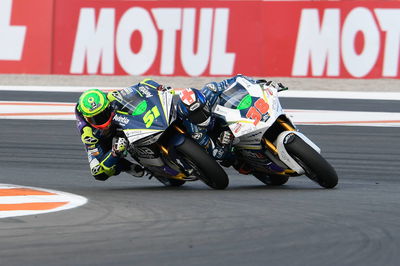
Heading into 2020, the central protagonists remain in place to attack the new season with a year of experience to lean upon, but the second year will also see improvements introduced as the technology development ramps up.
Fresh from pre-season testing at Jerez 12 months on from the devastating fire, riders were lapping 1.5 seconds quicker than the previous year thanks to modifications.
Michelin has developed new tyres for the series, Energica has enhanced battery cooling to aid performance and Ohlins has revised its forks to deal with the forces and weight of the bikes.
“In the front it’s quite clear and Michelin has found quite a good improvement for most of the riders,” Nicolas Goubert, MotoE director, said. “In the rear, they brought two new tyres that gave good grip, but not enough consistently. So they told us that will come up with something different.
“Most of them are very happy with the new fork setting which basically helps in hard braking, the bike doesn't dive so quickly.
“All in all it’s been a very good test and the improvement in lap time has been quite impressive, about 1.5s.”
The gains have resulted in reigning champion Ferrari topping the test with a 1m 47.494s. To put that into context, the all-time Moto3 lap record at the Spanish circuit is 1m 45.745s.
Granted, MotoE isn’t challenging for world records yet, but similar jumps in performance will quickly see the electric bikes overtake the lightweight class.
Like all major motorsport, the world will have to wait a little longer to watch MotoE’s latest progress in action as its 2020 opener at Jerez has been postponed amid the coronavirus pandemic. But it’s not the first time the electric series has fought through an unexpected adversity.
